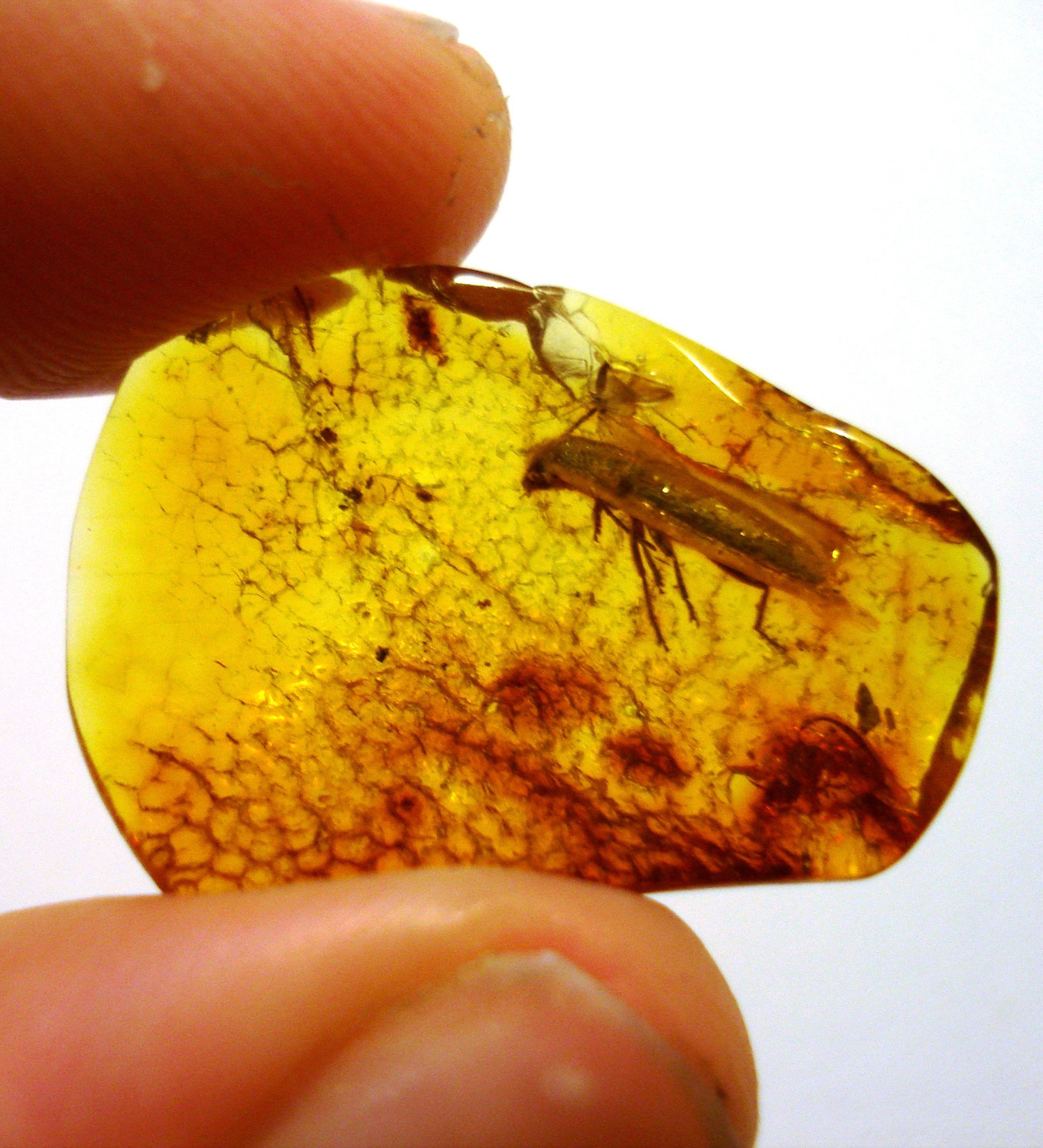Amber, the tears of the sun
Amber can take many forms, but the most beautiful one suggests solidified honey, warm and glowing when suffused by sunlight.
Several years back, I read a marvelous book, “The Amber Forest” by George and Roberta Poinar, who used amber as a time machine to peer into a world that has been gone for between 15 and 45 million years by studying insect, animal and plant inclusions encased in Dominican amber. The book lists all the plants, insects and animal materials they found along with their conclusion that the biome was a moist tropical forest which contained layered vegetation — canopy, sub-canopy and understory trees together with a shrub layer and relatively bare forest floor.
Raw amber has been worked into jewelry and carvings for thousands of years. Amber pieces have been found in ancient Israel, Jordan, Mesopotamia as well as in King Tutankhamen’s tomb in Egypt. The puzzle presented by ancient Middle Eastern amber is that it originated far away in the Baltic–Scandinavian area of northern Europe.
The medieval Silk Road stretched from Europe to the Far East. There was an earlier Amber Road reaching from Northern Europe to the Mediterranean via the Vistula and Dneiper rivers.
The Getty Museum has a online catalogue of small amber figurines primarily of Etruscan origin from 400-500 B.C. There was even a 180-square-foot Amber Room in the Catherine Palace in St. Petersburg that contained more than six tons of amber and other precious stones.
Numerous myths have attempted to explain amber’s origins. Most involve the sun or tears. However, some of the ancients already were considering the notion that amber was a tree product. That conclusion may stem from the piney fragrance noticed when amber is burnt.
The old German word for amber is bernsten, which is the source of the modern family name “Bernstein.”
But what is this semi-precious stone that is clearly so different from mineral gems? Anyone who has hiked through a forest containing pine trees has encountered those whitish blobs that smell so nicely of pine essence. Those blobs are actually a resin extruded by the tree partially to protect itself when the bark is damaged.
Resin should not to be confused with sap, which is the circulating fluid inside the living tree. Amber is prehistoric resin that flowed down the trunk and became fossilized. While the Dominican amber mentioned above can be 45 million years old, there is older amber.
In fact, there is amber found in the United States and in the United Kingdom dating to the Carboniferous period between 360 and 285 million years ago. Amber-like materials of recent origin — meaning 2 million years or younger — is not considered true amber. Formed from resin derived from other tropical trees, it is an intermediate stage between resin and amber.
Known as copal, it was used extensively by Meso-Americans as incense. By the 1800s, it was used by Europeans as a varnish.
In the Dominican Republic, the prime amber-producing tree was the now-extinct algarrobo — Hymenaea protera — which is a member of the legume family, the Fabaceae. Other trees suspected of producing amber are in the Pinaceae families, and the Araucaraceae, which include the monkey-puzzle tree and the Norfolk Island Pine.
However, there is evidence that Baltic amber comes from the family Sciadopityaceae, whose only living member now is the Japanese umbrella pine.
Amber is not my favorite gemstone, but it is a remarkable window into the past. That picture was greatly expanded by a recent momentous discovery in Myanmar by Chinese scientists of 99 million-year-old dinosaur parts preserved in amber.
Dinosaurs generally are depicted as having scale-like skins. In the last several years, however, there have been hypotheses dinosaurs may have been feathered. And indeed, this amber specimen contains two-toned feathers — brown on top and white below.
These feathers differ from today’s bird feathers in that it does not have well-developed rachis, the central stiff spine lying in the center of the feather, and to which the smaller structures attach. This specimen will help clarify feather evolution.
Fortunately, these amber pieces contain several vertebrae that clearly demonstrate the feathered animal in question is a dinosaur and not a bird.
The prize for the oldest fossilized amber specimens goes to 230 million-year-old gall mites discovered in Italy. They are arthropods from the Triassic period from between 251 and 199 million years ago that feed on plants and sometimes cause the formation of galls – abnormal growths on leaves, twigs or branches.
These mites are remarkably similar to today’s specialized group named Eriophyoidea, which contain approximately 3,500 species.
Personally, I prefer to think that amber really is tears of the sun.
Have a thought or comment for Sura Jeselsohn? Email her at greenscenesura@gmail.com.






